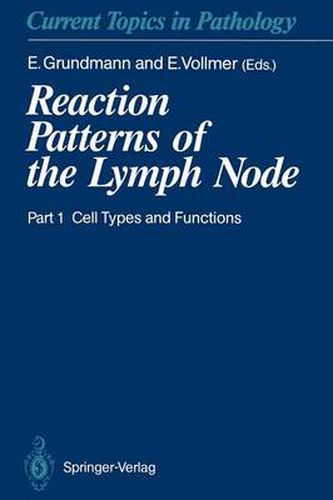Readings Newsletter
Become a Readings Member to make your shopping experience even easier.
Sign in or sign up for free!
You’re not far away from qualifying for FREE standard shipping within Australia
You’ve qualified for FREE standard shipping within Australia
The cart is loading…






This title is printed to order. This book may have been self-published. If so, we cannot guarantee the quality of the content. In the main most books will have gone through the editing process however some may not. We therefore suggest that you be aware of this before ordering this book. If in doubt check either the author or publisher’s details as we are unable to accept any returns unless they are faulty. Please contact us if you have any questions.
Due to the topology and structure of the lymph nodes, their role in the pathogenesis and development of diseases is a very special one. Each organ and even each organ-related region of the body has its own group of lymph nodes, specific topological reactions, such as in circumscribed inflammation or in the metastatic spread of malignant tumors. On the other hand, all the lymph nodes of an organism join in a uniform function effected by highly differentiated structures. Volume 84 of Current Topics in Pathology presents our current knowledge about the structure and reaction patterns of this sec ondary lymphoid organ. Despite our original intention to publish all the contributions in one book, it became necessary to divide them: Part 1 focuses on the involved nodal compartments, cell types, and functions, while Part 2 describes their reactions in inflammatory, neo plastic, and immune-deficient diseases. Even with the cooperation of more than 30 authors, the coverage cannot be exhaustive. The scope of both parts is limited to those reactions that can be described by direct and indirect morphological methods, including modern tech niques such as immune electron microscopy.
$9.00 standard shipping within Australia
FREE standard shipping within Australia for orders over $100.00
Express & International shipping calculated at checkout
This title is printed to order. This book may have been self-published. If so, we cannot guarantee the quality of the content. In the main most books will have gone through the editing process however some may not. We therefore suggest that you be aware of this before ordering this book. If in doubt check either the author or publisher’s details as we are unable to accept any returns unless they are faulty. Please contact us if you have any questions.
Due to the topology and structure of the lymph nodes, their role in the pathogenesis and development of diseases is a very special one. Each organ and even each organ-related region of the body has its own group of lymph nodes, specific topological reactions, such as in circumscribed inflammation or in the metastatic spread of malignant tumors. On the other hand, all the lymph nodes of an organism join in a uniform function effected by highly differentiated structures. Volume 84 of Current Topics in Pathology presents our current knowledge about the structure and reaction patterns of this sec ondary lymphoid organ. Despite our original intention to publish all the contributions in one book, it became necessary to divide them: Part 1 focuses on the involved nodal compartments, cell types, and functions, while Part 2 describes their reactions in inflammatory, neo plastic, and immune-deficient diseases. Even with the cooperation of more than 30 authors, the coverage cannot be exhaustive. The scope of both parts is limited to those reactions that can be described by direct and indirect morphological methods, including modern tech niques such as immune electron microscopy.